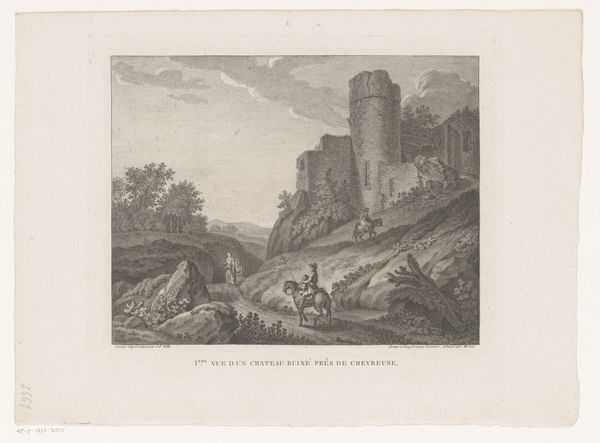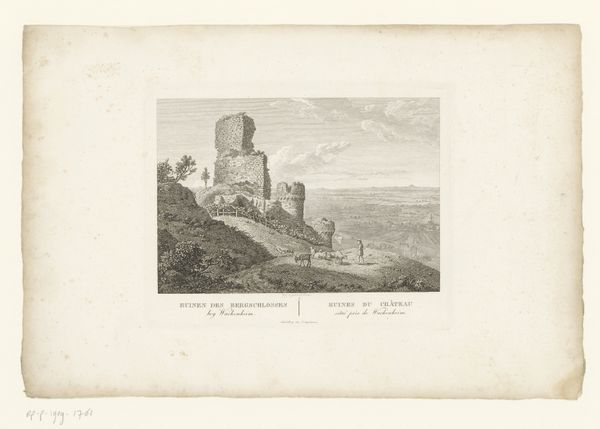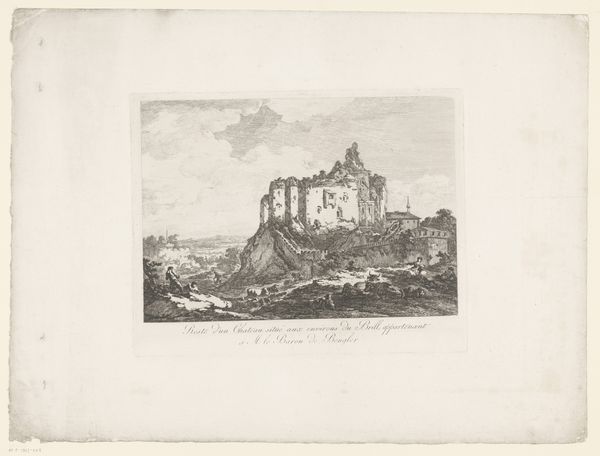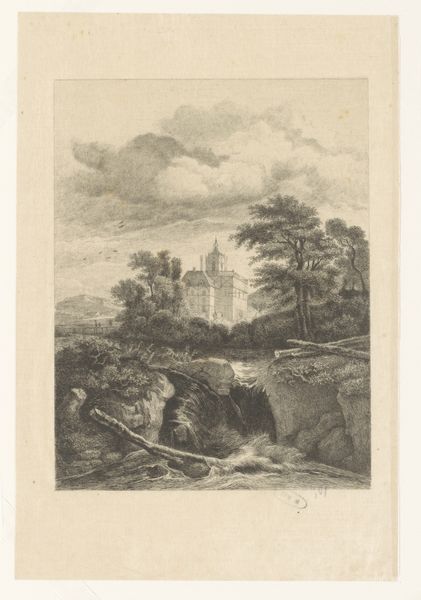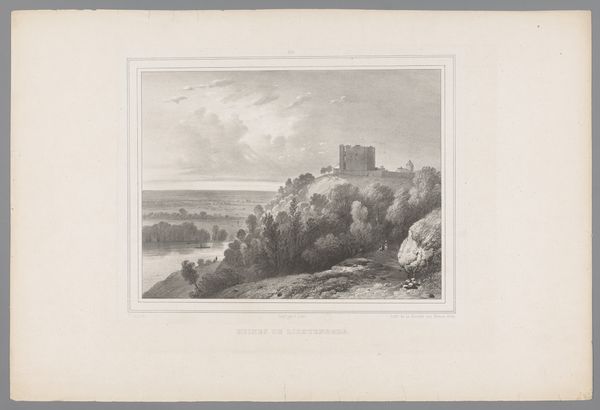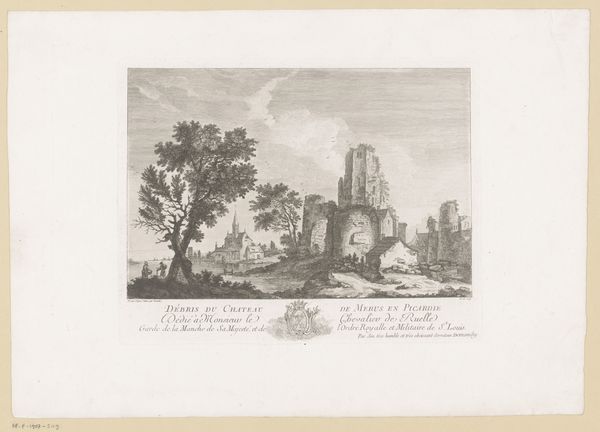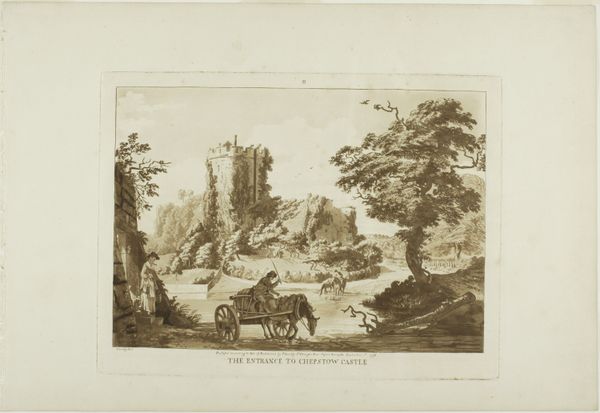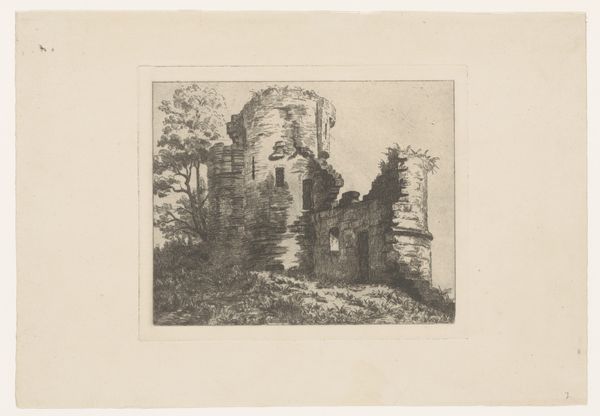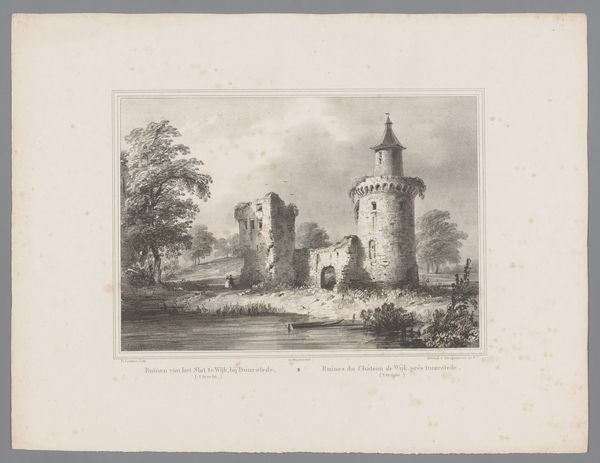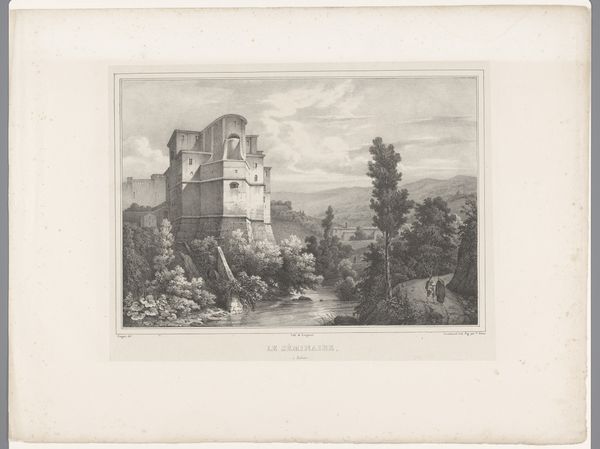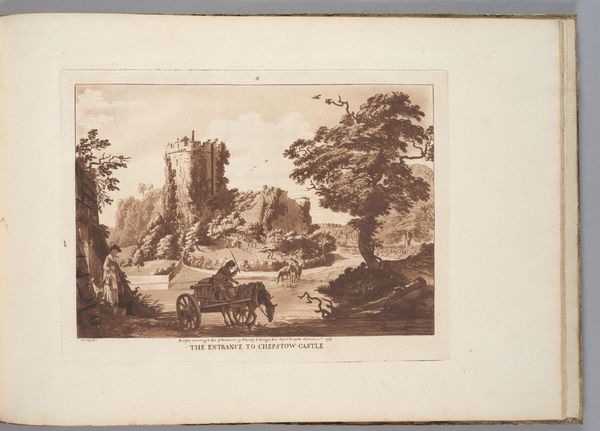
Dimensions: height 263 mm, width 200 mm
Copyright: Rijks Museum: Open Domain
This print, Landschap met ruïne van een kasteel, was made by Claude Mathieu Fessard in the 1700s. It's an etching, a process where acid is used to cut into a metal plate, which is then inked and printed. What’s striking here is the interplay between decay and craft. Fessard meticulously renders the crumbling castle, using line and shadow to convey the textures of stone and foliage. But this isn't just a straightforward depiction; it's a careful construction. The acid biting into the metal, the precise wiping of ink, the pressure of the printing press – all these steps contribute to the final image. Consider the labor involved in creating this print. From the initial drawing to the final impression, it's a testament to skill and patience. Yet, the subject matter speaks to the impermanence of human endeavor. The ruin, once a symbol of power, now succumbs to the relentless forces of time. This print invites us to consider the relationship between art and industry, between creation and destruction. It challenges us to look beyond the surface and appreciate the layers of meaning embedded within the artwork's very making.
Comments
No comments
Be the first to comment and join the conversation on the ultimate creative platform.

